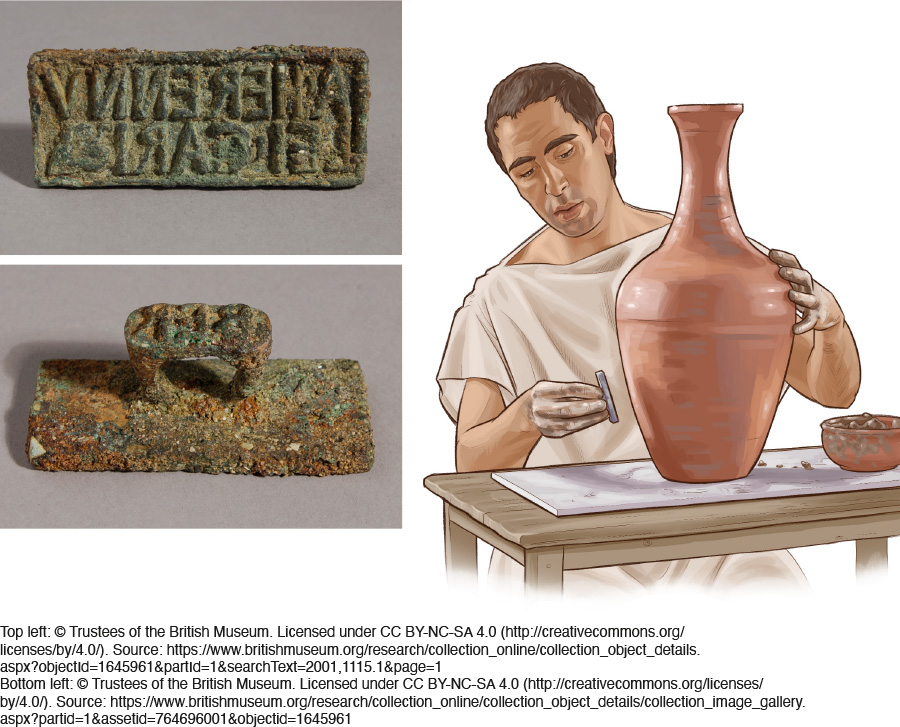The content displayed below is for educational and archival purposes only.
Unless stated otherwise, content is © Watch Tower Bible and Tract Society of Pennsylvania
You may be able to find the original on wol.jw.org

Seal Devices
The bronze seal shown in the photographs bears a name. In Roman times, people used seals to make impressions on wax or clay. Such seals had many different purposes. For example, as illustrated, potters stamped clay jars to identify the maker, the product, or the volume of the container. Sometimes plaster was used to fasten a cap on a jar. Before the plaster hardened, the seal of the merchant or the person shipping the product was pressed into it. Some people used a seal to make an impression that signified ownership of an item. Paul referred to a figurative seal of ownership when he stated that God had “put his seal on” Christians, or had anointed them with his holy spirit. This seal indicated that God was their Owner.—2Co 1:21, 22.
Credit Lines:
Top left: © Trustees of the British Museum. Licensed under CC BY-NC-SA 4.0 (http://creativecommons.org/licenses/by/4.0/). Source: https://www.britishmuseum.org/research/collection_online/collection_object_details.aspx?objectId=1645961&partId=1&searchText=2001,1115.1&page=1; Bottom left: © Trustees of the British Museum. Licensed under CC BY-NC-SA 4.0 (http://creativecommons.org/licenses/by/4.0/). Source: https://www.britishmuseum.org/research/collection_online/collection_object_details/collection_image_gallery.aspx?partid=1&assetid=764696001&objectid=1645961
Related Scripture(s):